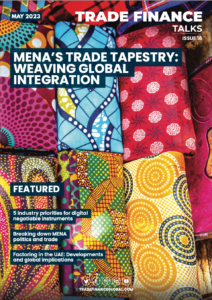Estimated reading time: 4 minutes
Recent news reports have suggested that the European Union Parliament will likely retain treatment of certain trade finance instruments at a credit conversion factor (CCF) of 20% instead of increasing it to 50%, but trade finance specialists tracking the ongoing proceedings have said that the EU banking community needs to remain extremely cautious.
Christian Cazenove, group head of trade oversight at Societe Generale, is part of the coalition of bankers who have enlisted the help of corporates under the umbrella of the ICC (International Chamber of Commerce) and drawn from solid industry data to make the case to EU policymakers that hiking the CCF to 50% for performance-related trade finance instruments such as bonds, guarantees, and standbys is unwarranted and would be deleterious for corporates, competitiveness, and ultimately national economies.
In late October 2021, the EU Commission launched a Capital Requirements Regulation (CRR3) proposal, which included provisions to raise at 50% the CCF for performance guarantees and set fixed maturity at 2.5 years for all trade finance instruments as part of the much broader movement to implement Basel III capital adequacy reforms.
This unwelcome development prompted a small coalition of banks within the EU to band together along with corporates, Global Credit Data (GCD) and Fleishman-Hillard agency under the ICC to gather compelling data and initiate an effort to convince the EU to reconsider.
Since mid-April 2022, the coalition has conducted over 70 meetings with EU member states, the European Council, and other EU governmental bodies.
By November 2022, the Council adopted the text and agreed to consider the coalition’s amendment to keep the CCF at 20% and an effective maturity rate for trade finance products.
In January 2023, the European Parliament’s Economic and Monetary Affairs Committee decided to maintain the 20% CCF for off-balance sheet trade finance instruments. The EU trialogue (EU Commission, Council and Parliament) is expected to take up the matter in early March 2023.
Cazenove said, “When we discussed the issue, the (European) Council said they would not oppose the amendment, but we are still far from the final outcome and must leave member states do their role.”
Sweden holds the Presidency of the Council for the first half of 2023 and indications are that the issue would be settled before the end of their leadership.
To get more appropriate treatment of performance-related trade instruments this far was only possible with the backing of corporates and robust data.
“If it was only the banks, it would have been too tough”, Cazenove explained to DCW. “It was important to gather corporates because a move (of the CCF) from 20% to 50% would have a huge impact on risk weighting for the banks and a massive impact on pricing for corporates. But a worst-case scenario would be banks cutting many credit lines, preventing small/middle-sized corporates from having access to credit from banks. That’s what’s at stake.”
To illustrate the pricing shock users of performance-related trade products could face if the CCF was increased to 50%, Cazenove cited an example from a December 2021 ICC paper on the treatment of trade finance assets under the proposed CRR3. This report demonstrated the potential impact on corporates needing performance guarantees to develop infrastructure projects (like building a road or an energy station) or participate in a tender.
In the scenario given, Company A delivers work to Company B (beneficiary), with a duration of 1 year and Company B is covered by a Performance Guarantee for €100 million. It has been estimated that the RWA (Risk Weighted Asset) resulting from an increase of CCF would reach €7.4 million (CCF 50%) compared to €2.9 million (CCF 20%).
In total, the new 50% CCF proposed could cause a price increase of 150%, raising the cost to €330,000 instead of €130,000 for Company A.
Corporates from the manufacturing, transportation, and energy sectors, along with large industrial companies, aligned with the coalition of banks to push back against the proposed CCF increase. The coalition relied on statistical evidence obtained from Global Credit Data and the ICC Trade Register to demonstrate that trade finance products are a lower-risk asset class.
This article was originally published in Documentary Credit World (DCW), published by the Institute of International Banking Law & Practice.
 Australia
Australia Hong Kong
Hong Kong Japan
Japan Singapore
Singapore United Arab Emirates
United Arab Emirates United States
United States France
France Germany
Germany Ireland
Ireland Netherlands
Netherlands United Kingdom
United Kingdom

























Comments are closed.